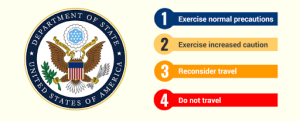By Richard Wolf | USA Today
WASHINGTON — The Supreme Court on Monday appeared headed toward restricting the federal government’s authority to require permits for major emitters of greenhouse gases.
Such a ruling from the court’s conservative wing wouldn’t affect an effort by the Obama administration to regulate the sources of global warming, but it would eliminate one method of doing so.
At issue is the Environmental Protection Agency’s decision to change the threshold in the Clean Air Act for the amount of emissions from a power plant, refinery or other stationary source that requires a permit. Liberal justices said it was a reasonable move to avoid an absurd over-regulation of greenhouse gas emissions, but conservatives said it went too far.
"I couldn’t find a single precedent that strongly supports your position," Justice Anthony Kennedy, the most likely swing vote, said in response to U.S. Solicitor General Donald Verrilli’s defense of the EPA’s move.
Kennedy was in the majority when the high court ruled 5-4 in 2007 that greenhouse gases are an air pollutant and the EPA has authority to regulate motor vehicle emissions. If he switches sides on whether that extends to stationary sources such as power plants, it could seal the program’s fate.
Though the case focuses on what Verrilli called "an urgent environmental problem … one that gets worse with the passage of time," the court’s ruling is likely to have only limited impact. That’s because the government has other ways of regulating greenhouse gas emissions from stationary sources.
Industry and state government opponents of those regulations argued in court that cumbersome permitting programs used for common air pollutants should not apply to greenhouse gases such as carbon dioxide, which are emitted in much greater quantities but have limited impact on local air quality.
Peter Keisler, the attorney for a coalition of industry groups challenging the regulations, called the permitting program operated by more than 90 state and local authorities a form of "command and control."
Still, even the opponents didn’t question the danger of greenhouse gases or the government’s first effort to suppress them via tailpipe emissions. Those are matters of settled law.
Unlike other air pollutants, carbon dioxide emissions that contribute to global warming are so ubiquitous that the EPA raised the law’s threshold level requiring a permit from 100 tons per year to at least 75,000 tons. Opponents say that amounts to rewriting an act of Congress — even though the higher threshold makes it easier for some to avoid the permitting requirement.
Several liberal justices said the EPA’s decision to raise the threshold at which greenhouse gas emissions would require a permit made sense, since Congress didn’t anticipate the problem of global warming. In cases like that, it’s customary to defer to the regulatory agency.
"Statutes all the time have implicit exceptions," Justice Stephen Breyer said. "That’s the most common thing in law."
"An agency cannot make a round hole square by rewriting unambiguous statutory language," said Texas Solicitor General Jonathan Mitchell, representing state government opponents.
The case is a sequel to those decided by the high court in 2007 and 2011 — cases that affirmed the government’s authority to regulate greenhouse gases from motor vehicles under the 1970 Clean Air Act.
Industries, a coalition of conservative states, Republican lawmakers and others claim the law doesn’t empower the administration to regulate greenhouse gas emissions from power plants and other stationary sources. They say those regulations, begun in 2010, risk jobs and economic development.
The administration, along with environmental groups and a number of other states, including California and New York, say the Clean Air Act was meant to address all air pollutants, including greenhouse gases. Once the administration addressed auto and truck emissions, they argue, the next natural step was stationary sources.
The EPA’s decision to multiply the level of emissions requiring a permit was simply common sense, proponents say, to avoid requiring permits from more than 80,000 mid-size businesses, hospitals, universities, apartment buildings and shopping malls.
"All of my relatives are together — they have to have a permit," Breyer quipped. Later advised by Verrilli that humans are considered to be "net neutral" on carbon dioxide emissions, Breyer breathed a sigh of relief. "That means I’m a part of sustainable development!" he said.
The showdown over greenhouse gases represents the second major environmental case to come before the court this term. The other one, argued in December, tests the legality of a federal rule requiring that upwind states slash ozone and fine particle emissions because of their impact on downwind states.
Back to News

